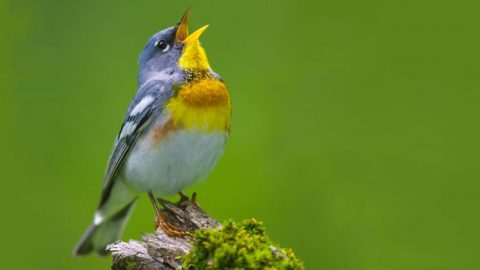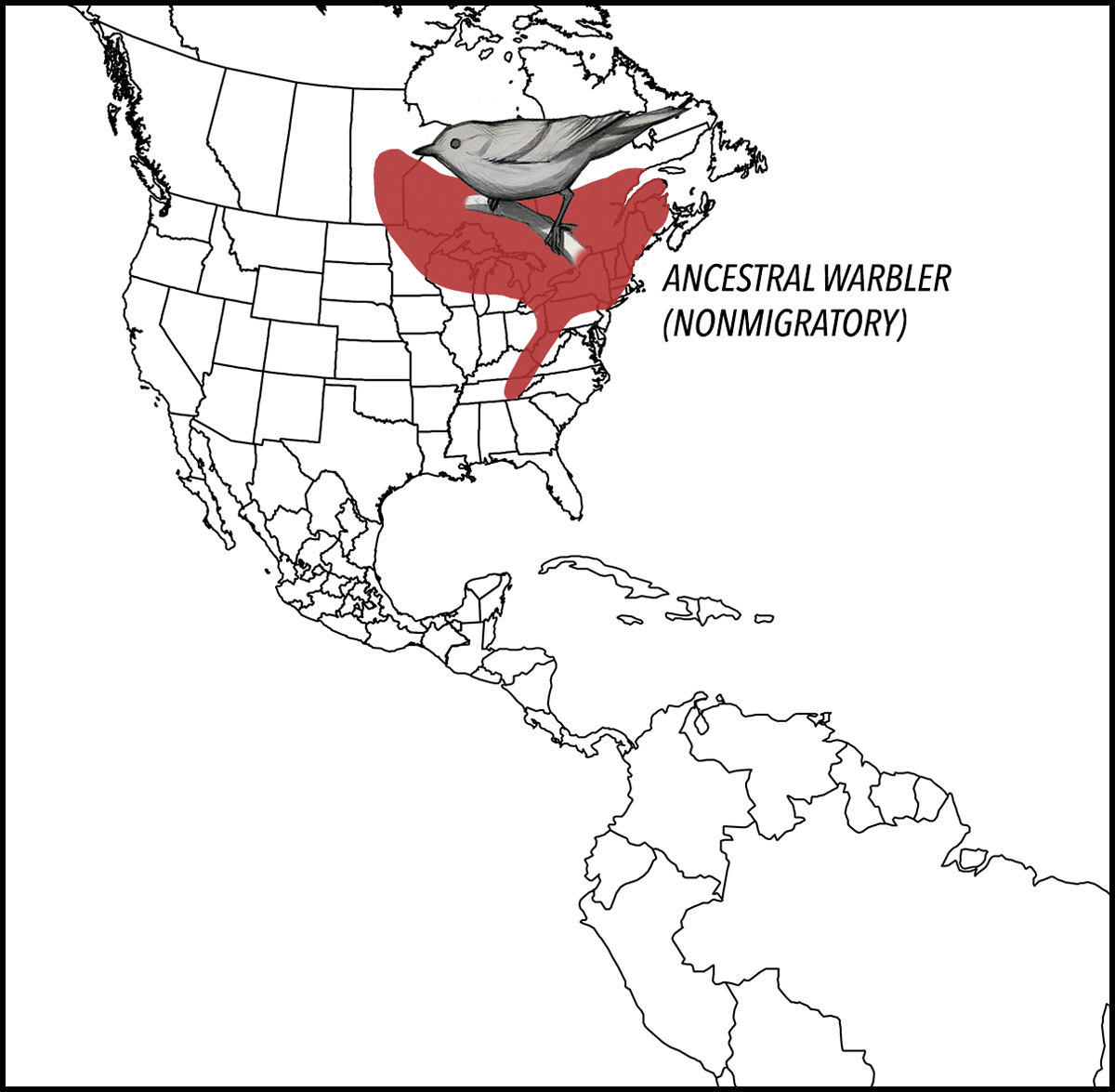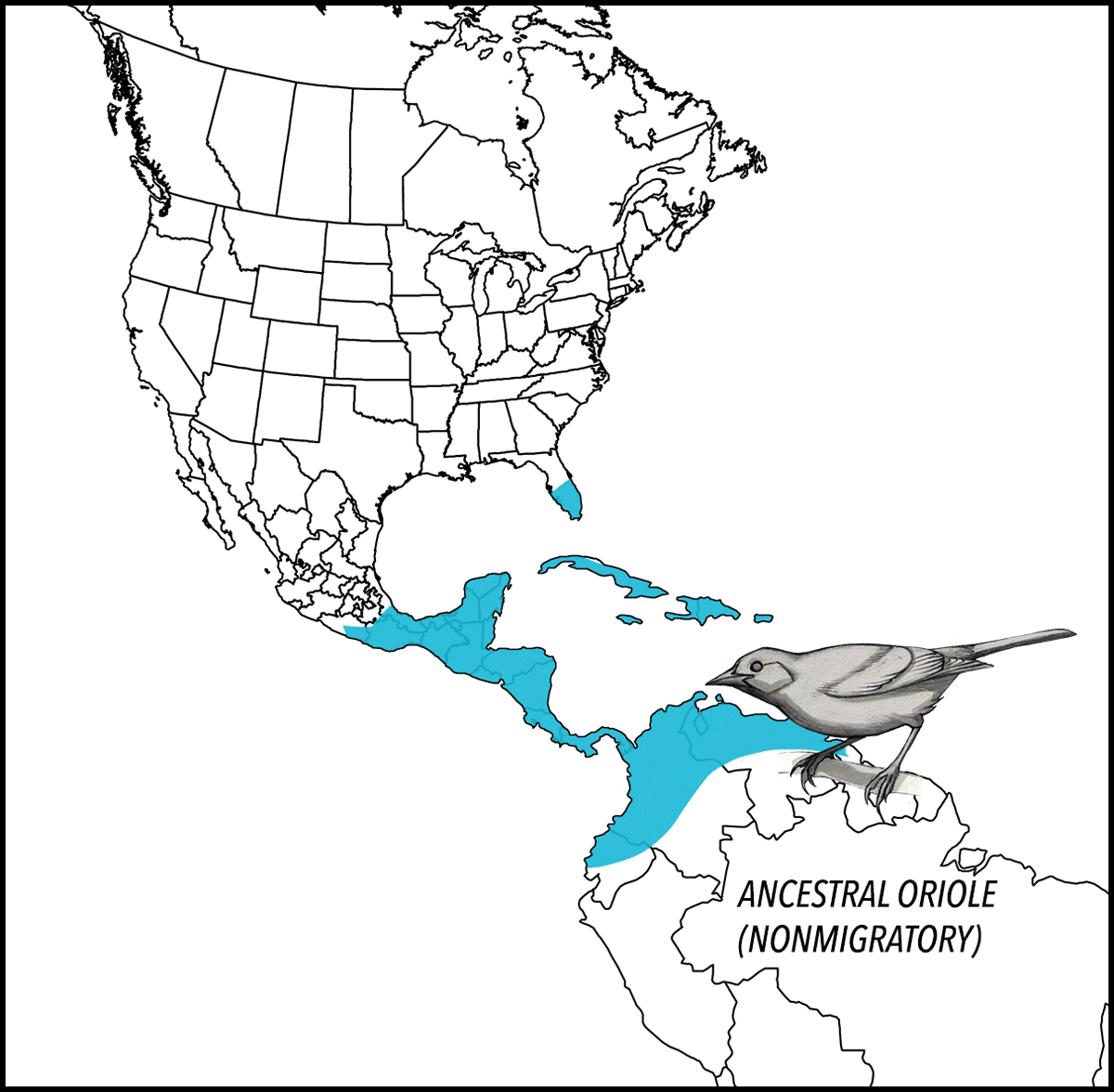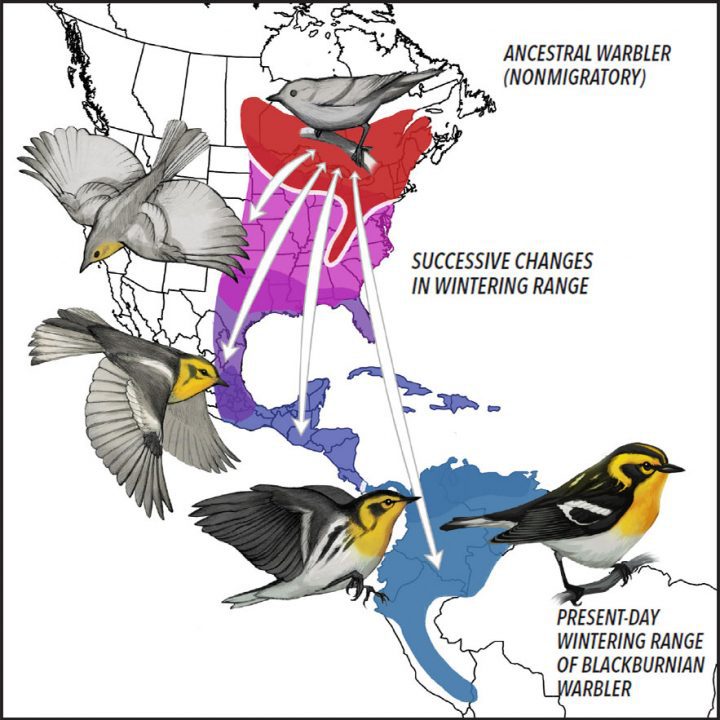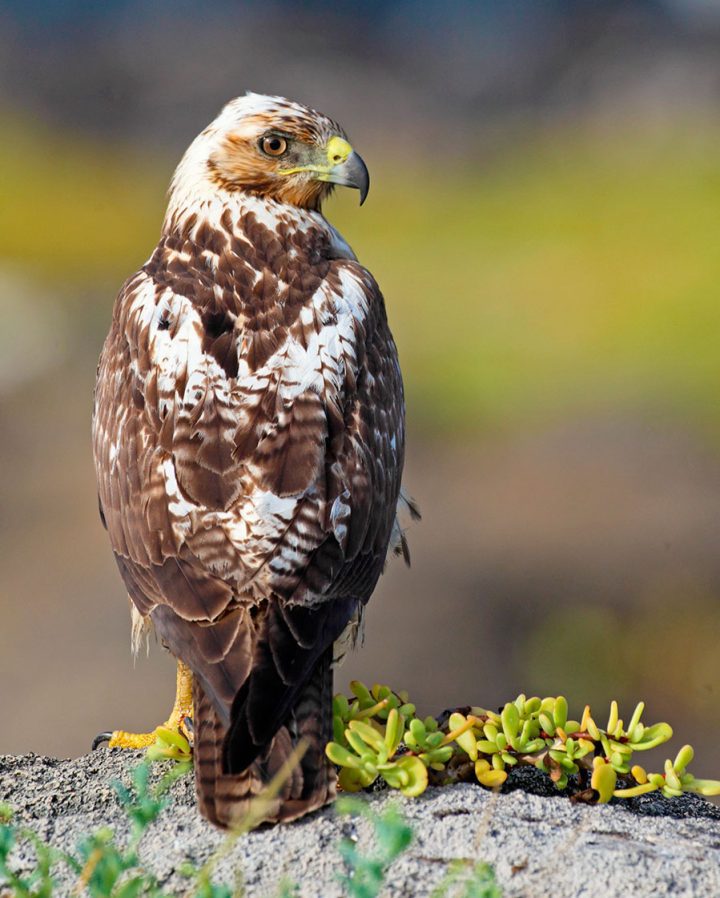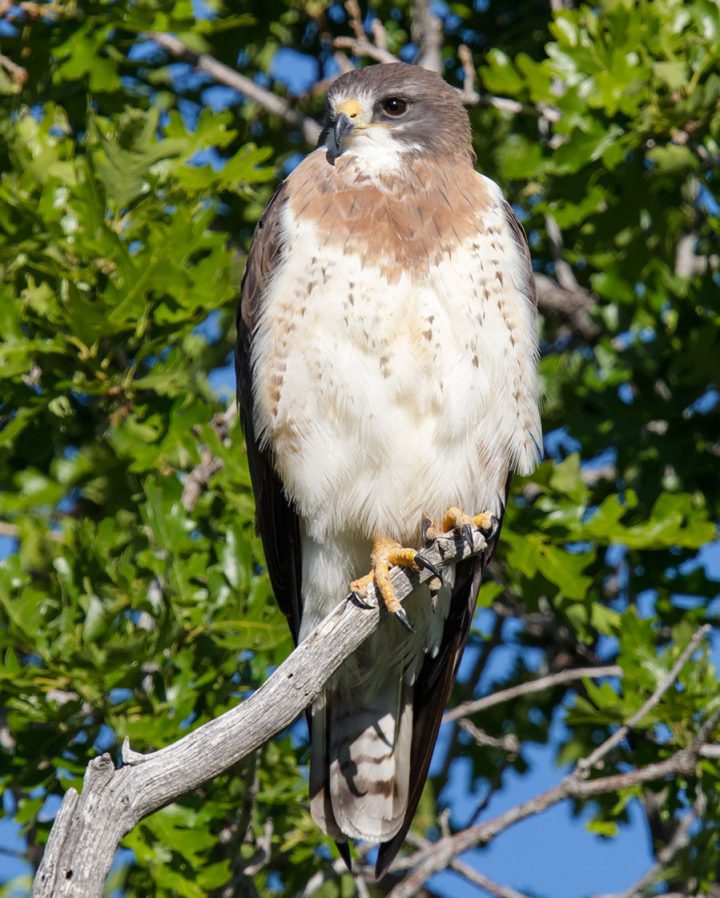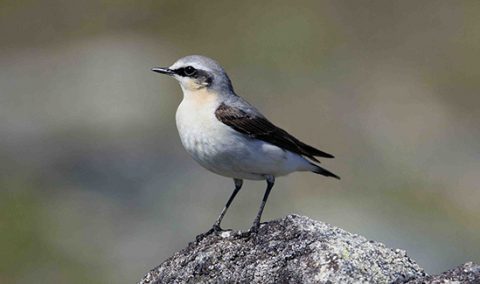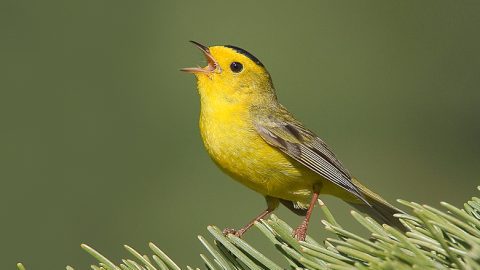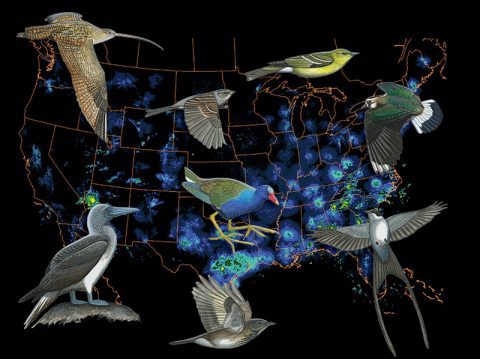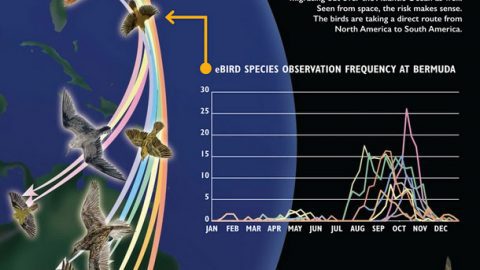The Evolution of Bird Migration
Adapted from the Handbook of Bird Biology, Third Edition
Blackburnian Warbler by Brandon Holden. April 11, 2017The spectacular movements of birds are among their most captivating features. Migrations can be as long as the globe-spanning journeys of Northern Wheatears, or as short as the seasonal shift of Clark’s Nutcrackers a few thousand feet up and down a mountain slope.
To an earthbound species like humans, migration may seem like an extreme adaptation. But for many bird species it’s a straightforward reaction to the availability of resources. Seasonal change is one of the most dependable features of our planet, providing predictable resources such as spring leaf-out, monsoon rains, insect hatches, and fruiting seasons.
Each of the world’s bird species has adapted in some way to this seasonality—many by making long, precisely timed annual movements. Migration is the umbrella term for the tremendously variable movement patterns that birds have evolved for this purpose.
One leading theory holds that avian migration evolved by a gradual extension of smaller annual movements as birds searched for improved food or breeding opportunities. Individuals whose movements gave them better chances to survive and reproduce passed that migratory behavior along to their offspring. So, what at one time might have been a short jaunt to and from a seasonal feeding ground might over time have become exaggerated as climates or resources changed.
A key force in this evolution may have been the earth’s many cycles of environmental change, including, over the last 2.5 million years, more than 20 glacial cycles. The most recent of these was the melting and retreat of vast ice sheets about 15,000 years ago. One can imagine that, with every cycle of Pleistocene glaciation, migrants retreated to more southern breeding localities and made shorter migrations while the ice ruled the north. Then, when the ice receded, the migrants moved north to take advantage of renewed breeding opportunities in the unoccupied habitat that emerged.
A recent study of the evolution of migration in the New World warblers makes it clear that migration is not a recent product of the last few thousand years. Rather, it appears likely that the ability to migrate—to gamble on the regular appearance of resources someplace else—was a shared trait of all birds, if not all vertebrates.
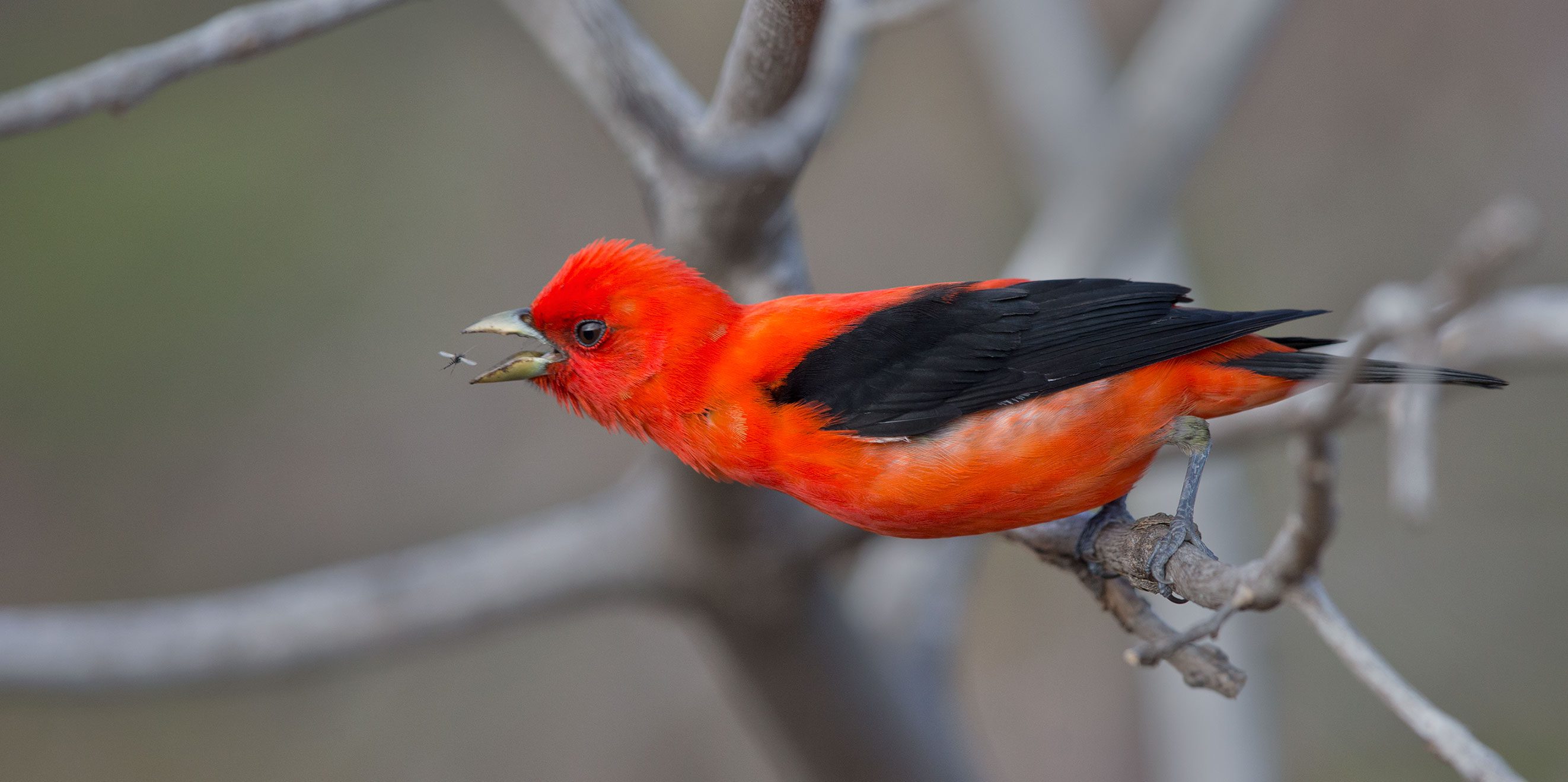
Did Migration Originate From the North or the South?

The Northern Home hypothesis suggests migration evolved with birds living in the north. These birds began moving south for winter. Gradually, they extended their wintering range over generations while always returning to their original breeding range. Evidence suggests that American wood-warblers evolved migration this way. 
A competing idea, the Southern Home hypothesis, suggests migration started with a tropical species that gradually moved northward during summers, but always returned to its original wintering grounds. Recent evidence suggests the present-day Baltimore Oriole may have done this. 
And the winning hypothesis is? For many species in a recent analysis, the Northern Home approach (above) best explained how migration evolved. A smaller number of bird groups, including the orioles, did appear to have followed the Southern Home approach (previous image).
For more than a century, ornithologists have debated the origins of bird migration between North American breeding grounds and tropical wintering grounds. Did it start with birds in temperate areas moving to the tropics for winter? Or vice versa—birds in tropical areas moving to temperate areas for better breeding opportunities?
These two possibilities have come to be known as the “northern home” and “southern home” hypotheses, respectively, and they’ve proven difficult to test because doing so requires looking back into the deep history of these migratory groups.
Recently, a team led by Benjamin Winger—a former Cornell University undergraduate who is now a professor at the University of Michigan—devised a clever approach. They analyzed an evolutionary tree showing the lineages of some 800 species of songbirds, including the New World warblers, cardinals, buntings, sparrows, blackbirds, orioles, and tanagers. The team developed a model that used the evolutionary tree for these many species to predict the ancestry of their seasonal migrations. Their model reconstructed changes in the breeding and nonbreeding distribution of these birds throughout their evolutionary history, which provided a basis for estimating how the birds’ migration patterns had evolved over time.
In the end, Winger and his colleagues found that long-distance migration had most often evolved through species shifting their wintering ranges toward the tropics. It was less common for species to shift their breeding ranges away from the tropics.
Additionally, the study revealed that many groups of present-day tropical species—birds that stay in the tropics year-round—are descended from migratory ancestors that lost their migration traits.
Taken together, the evidence suggests that migration evolved most commonly in birds that originally were found in the north, the “northern home” idea.
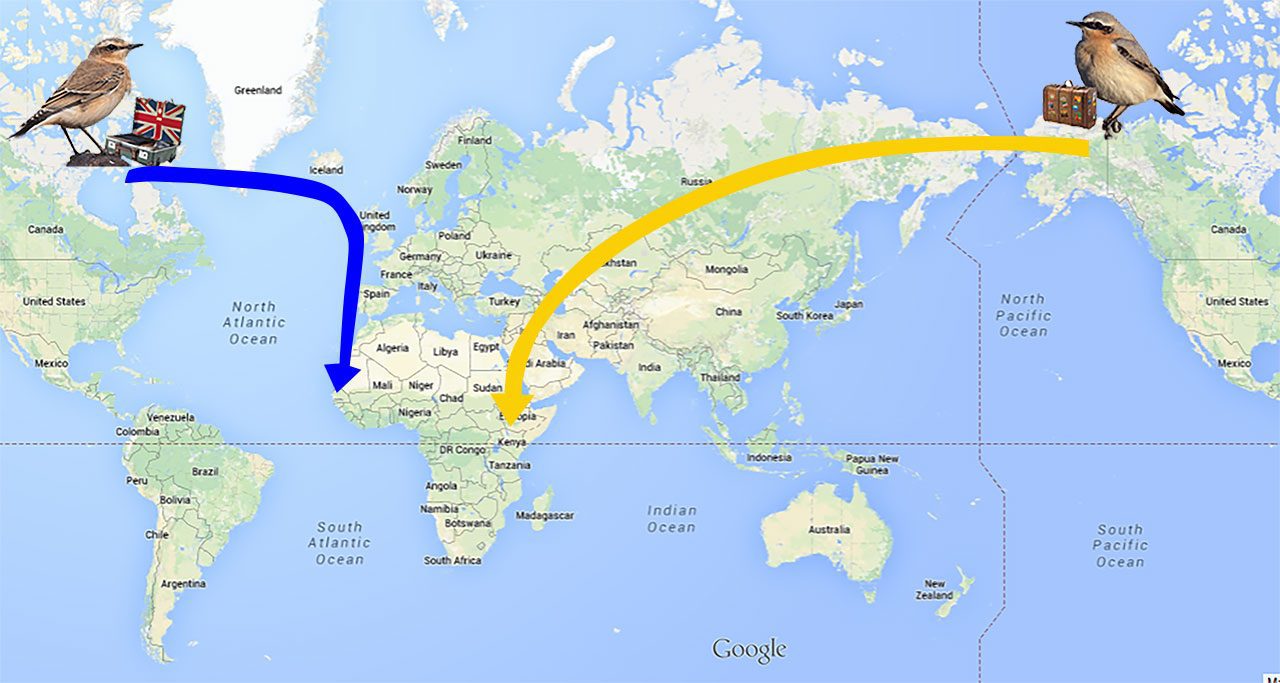
The Continuing Evolution of Migration
In some birds, it’s possible to still see the imprint of past evolutionary forces in their present-day migrations. The Northern Wheatear, for example, is a small songbird that breeds in tundralike habitats around the Northern Hemisphere. It was originally found in Eurasia, but as the northern ice sheets began to recede around 20,000 years ago, the species colonized North America. Colonists came from both directions: from Siberia eastward into Alaska, and from Europe westward across the Atlantic and into Canada.
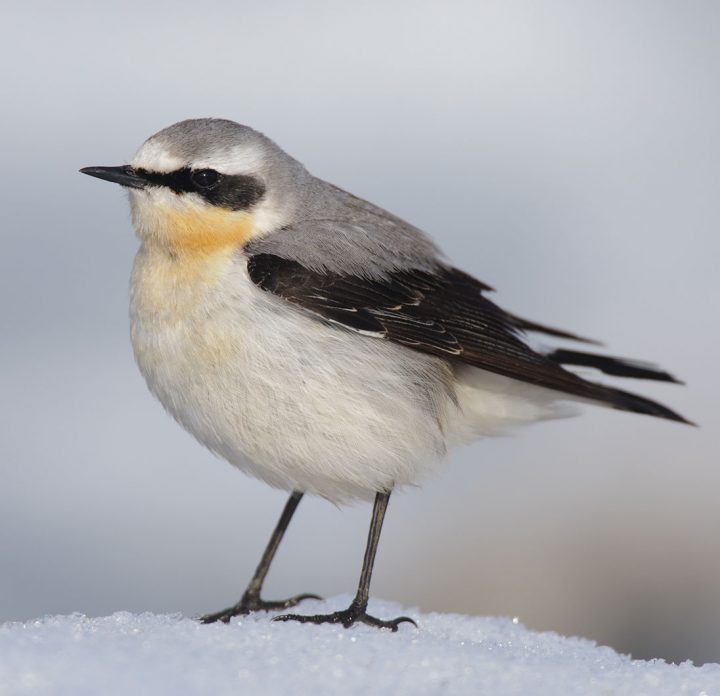
Amazingly, none of these wheatears have found wintering grounds in North America. They all still retrace their ancestral migratory paths to wintering grounds in Africa. Wheatears in Alaska head westward across Asia to East Africa, a route covering 8,700 miles—the longest distance recorded for a migratory songbird. Meanwhile, birds in the Canadian high Arctic migrate eastward across the Atlantic to West Africa. It’s one extreme example of the way migration probably evolved for many species: a gradual increase in distance between summer and winter grounds, while the instinct to migrate and the migratory path remain relatively unchanged.
The Galápagos Hawk is another example of past evolutionary changes made visible. It’s the only raptor endemic to the Galápagos Islands, 600 miles away from the South American mainland. How it got there has been a mystery, since most raptors avoid flying over open water. But genetic evidence now shows the Galápagos Hawk is an evolutionary offshoot of the Swainson’s Hawk, a North American species that migrates in large flocks to southern South America. It’s now thought that the hawks’ ancestors were undertaking this same migration about 300,000 years ago, when a flock went off course, ended up in the Galápagos, and became the founding population of a new species.

The Galápagos Hawk is descended from the Swainson’s Hawk. They may have evolved from a flock of wayward Swainson’s Hawks that landed on the islands. Photo by Gary Kramer. 
A Swainson’s Hawk. A handful of these individuals may have landed on the Galápagos Islands and become "migration dropouts," giving rise to Galápagos Hawks. Photo by Brian Small.
But there’s a catch. Before evolution could produce any Galápagos Hawks, those first off-course birds would have had to somehow lose their inclination to migrate away from their newfound islands each year. Exactly how and why birds become “migration dropouts” is still a puzzle, but several other formerly migratory species have stopped migrating. For example, in 1980 ornithologists in Argentina discovered Barn Swallows nesting under a bridge in Buenos Aires province. This familiar swallow of North American fields and farms migrates to South America every year, but this was the first time it had ever been known to breed there.
And it wasn’t an isolated mistake. Genetic studies by Shawn Billerman, now a postdoctoral researcher in the Cornell Lab of Ornithology’s evolutionary biology laboratory, have shown that this resident Argentine population of Barn Swallows has grown over the decades, likely augmented both by the offspring of original colonizers as well as new dropouts arriving during the northern winter. These breeding birds have somehow been able to skip their northward migration and shift their breeding season by six months to match South American seasons. In recent years the birds seem to have completed their transition to a Southern Hemisphere lifestyle. They have been found migrating northward during Southern Hemisphere winter, a complete turnaround from the behavior of their ancestors just 40 years ago.
Dropout breeders have been seen in a few other swallow species with similarly long migratory paths, including House Martins from Eurasia that have bred in South Africa and Cliff Swallows from North America that have attempted to breed in Argentina—but only the Argentine Barn Swallows appear to have founded a lasting breeding population. Over evolutionary time, however, even fairly rare events can accumulate. This dropout phenomenon helps explain why so many sedentary bird populations—like the Galápagos Hawk—are most closely related to migratory populations elsewhere.
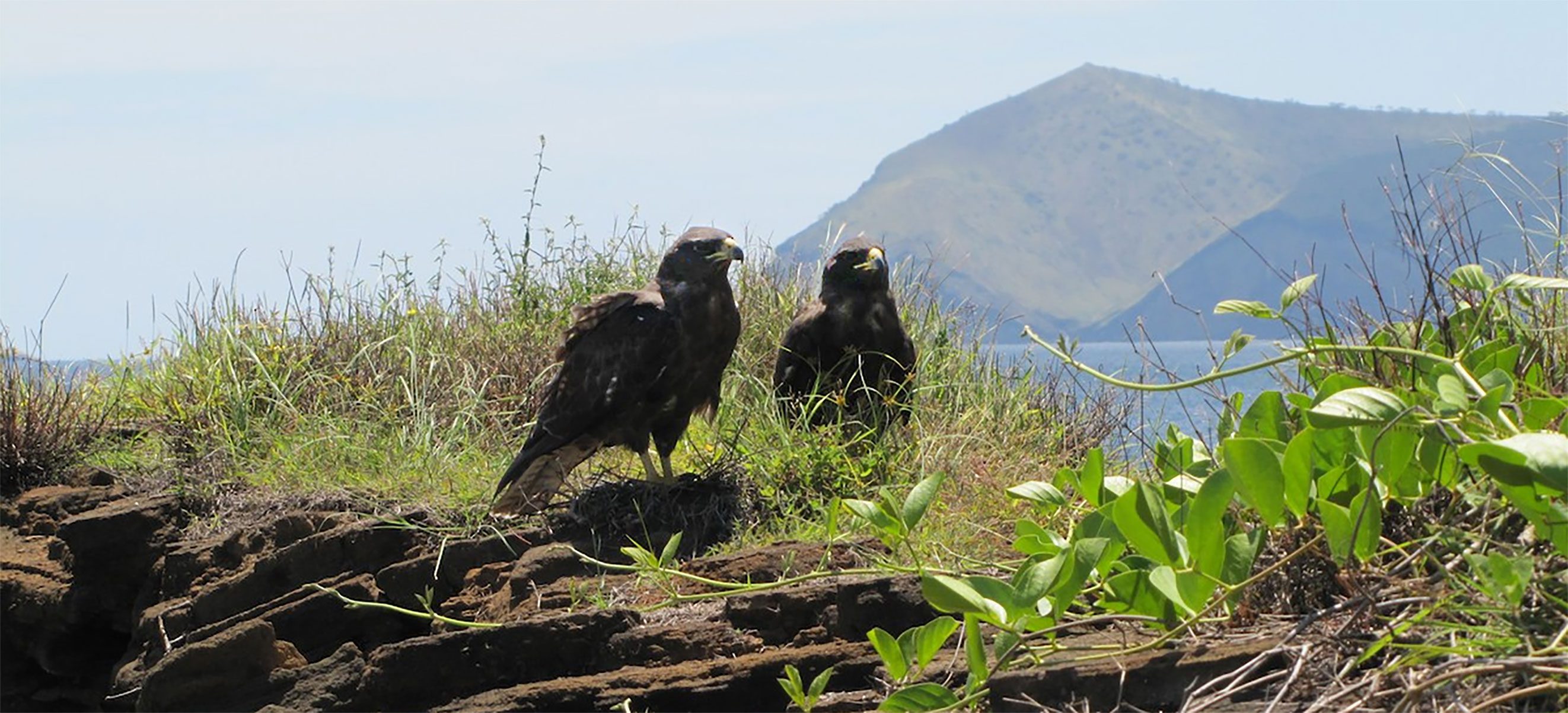
Migration as a Driver of Speciation
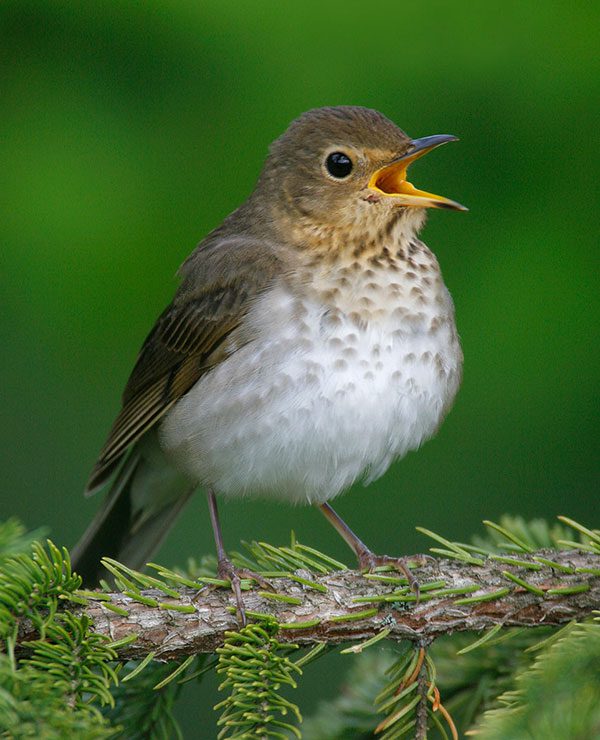
When different populations of a species follow different migratory paths—as in the case of those Alaskan versus Canadian Northern Wheatears—it can open the door to creating a new species. The Swainson’s Thrush may actually be on the path to becoming two species because of its diverging migratory behavior. This bird’s haunting song graces coniferous woodlands from the redwood-studded streamsides of California to the spruce forests of Labrador. But according to research by Kristin Ruegg of the University of California, Santa Cruz, the Swainson’s Thrush population actually consists of two groups with two distinct migratory pathways: birds from the Pacific Coast spend winters in Mexico and Central America, while birds from the rest of the range migrate all the way to South America.
These two migratory forms come together in western Canada and occasionally interbreed, causing the kind of complicated hybrid situation that can give taxonomists headaches. Ruegg’s in-depth genetic and field studies indicate that despite the hybridization, there’s little actual gene flow between the two forms. Migratory behavior appears to be one of the main factors keeping the two forms genetically separate—more important than differences in plumage color and calls.
How can a behavioral trait like migration result in differences in a bird’s physical appearance? One possibility is that differences in migration timing keep the two forms from pairing up and breeding together commonly. Or, the problem might not involve adults at all. Perhaps breeding proceeds without a hitch, but the hybrid offspring inherit a migratory instinct that’s intermediate between the Pacific and eastern forms. In this case, the hybrids might not be able to find either of the forms’ main wintering areas, and therefore don’t survive to make it back to their breeding grounds.
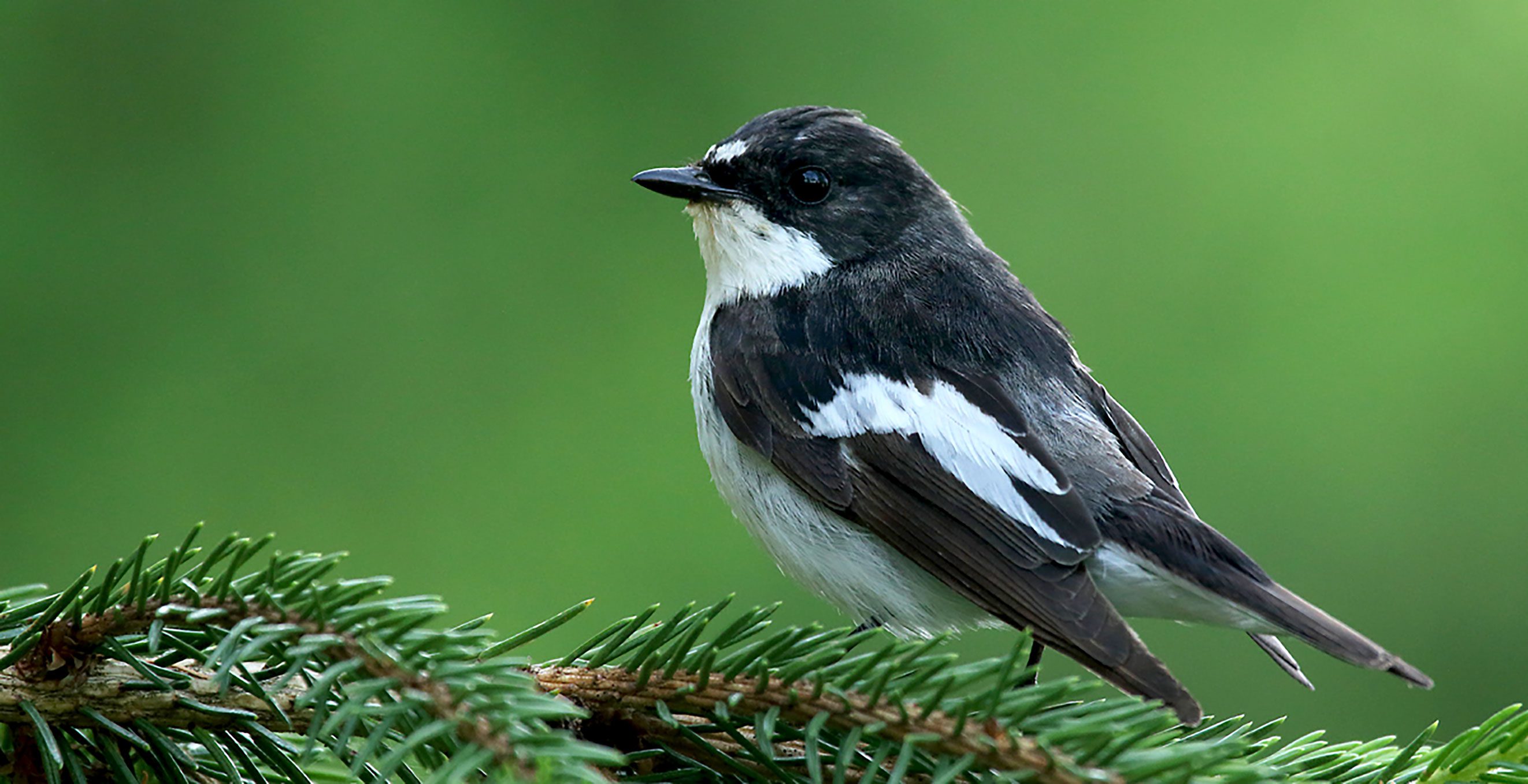
Migration and Climate Change
Related Stories
Changes to earth’s climate may have helped push the evolution of bird migration along, but today the changes brought about by the burning of fossil fuels may be occurring more rapidly than birds can keep up. As temperatures are getting warmer earlier in the year, plants are leafing and flowering earlier and insects are emerging earlier. In turn birds are returning from their nonbreeding grounds sooner. But the schedules of plants and insects and birds adjust independently, and migratory birds face the possibility of an ecological mismatch between their own seasonal timing and the timing of the foods that they eat.
One of the best-studied ecological mismatches involves the European Pied Flycatcher. In recent years these migrants have responded to a warming climate by breeding earlier—but unfortunately the key insects they feed to their chicks have advanced their calendars even more. The result is that the spring insect flush has already peaked by the time the flycatchers have chicks to feed.
In a hopeful twist, research is showing that pied flycatchers may have some flexibility in how they adjust their annual cycle. It was long thought that their migration schedules and breeding timing were essentially fixed by their internal biological clock. That’s because the birds use day length to tell them what time of year it is, rather than a climate-related signal such as temperature. Now, research suggests that the birds’ biological clocks can be fine-tuned physiologically rather than by waiting for natural selection to act. For instance, young pied flycatchers seem to calibrate their biological clocks using the day length they experience in the nest before making their first fall migration—and this helps set them up for an earlier return the next spring.
This doesn’t solve all the pied flycatcher’s problems, unfortunately. The birds are still arriving in northern Europe too late to catch the spring flush of insects. It’s just not the fault of their biological clocks; it’s the weather. The birds appear to be held up by poor conditions while migrating through southern Europe, where climate change has not yet pushed spring forward as far as it has in northern Europe.
The case of the European Pied Flycatcher points up a paradox of migration for all birds. Migration is a powerful way to turn seasonal variation into an advantage, but it’s also an exhausting and uncertain undertaking that renders birds vulnerable to adverse conditions at any point along their annual journey. Nevertheless, judging by the thousands of species that have evolved to migrate, it’s a gamble that tends to pay off.
Adapted from the third edition of the Handbook of Bird Biology, edited by Irby J. Lovette and John W. Fitzpatrick and published by John Wiley & Sons, Ltd. Cornell Lab of Ornithology. Copyright 2016.

All About Birds
is a free resource
Available for everyone,
funded by donors like you
American Kestrel by Blair Dudeck / Macaulay Library
